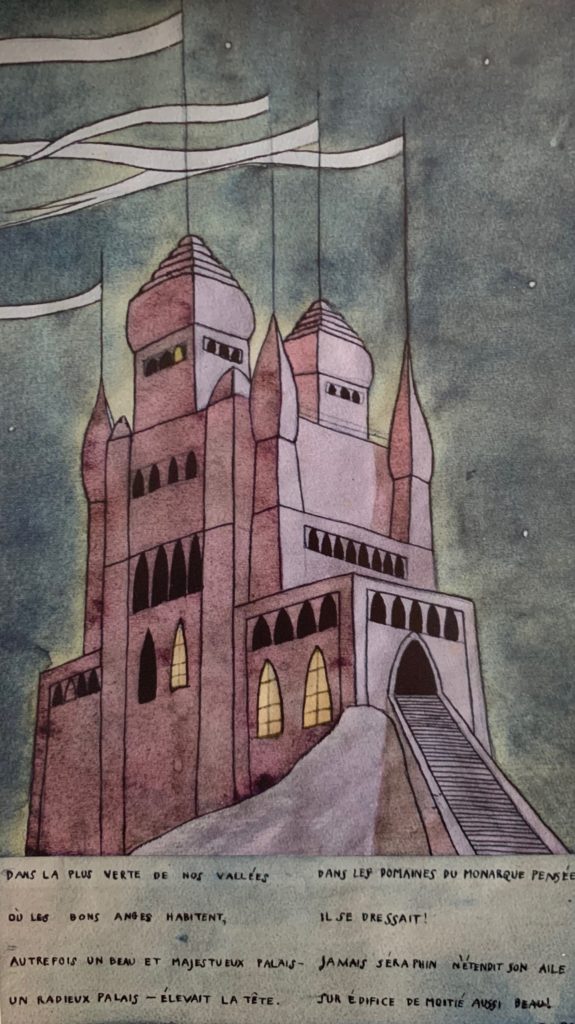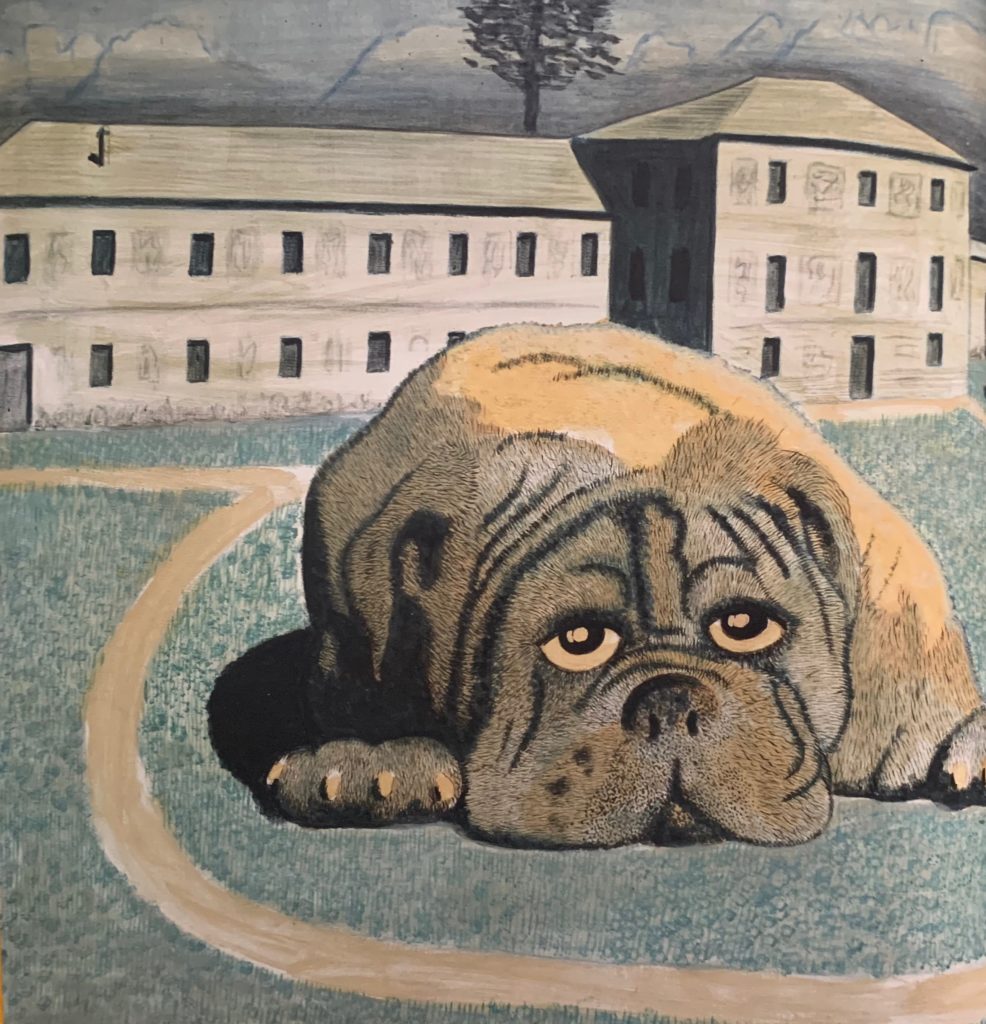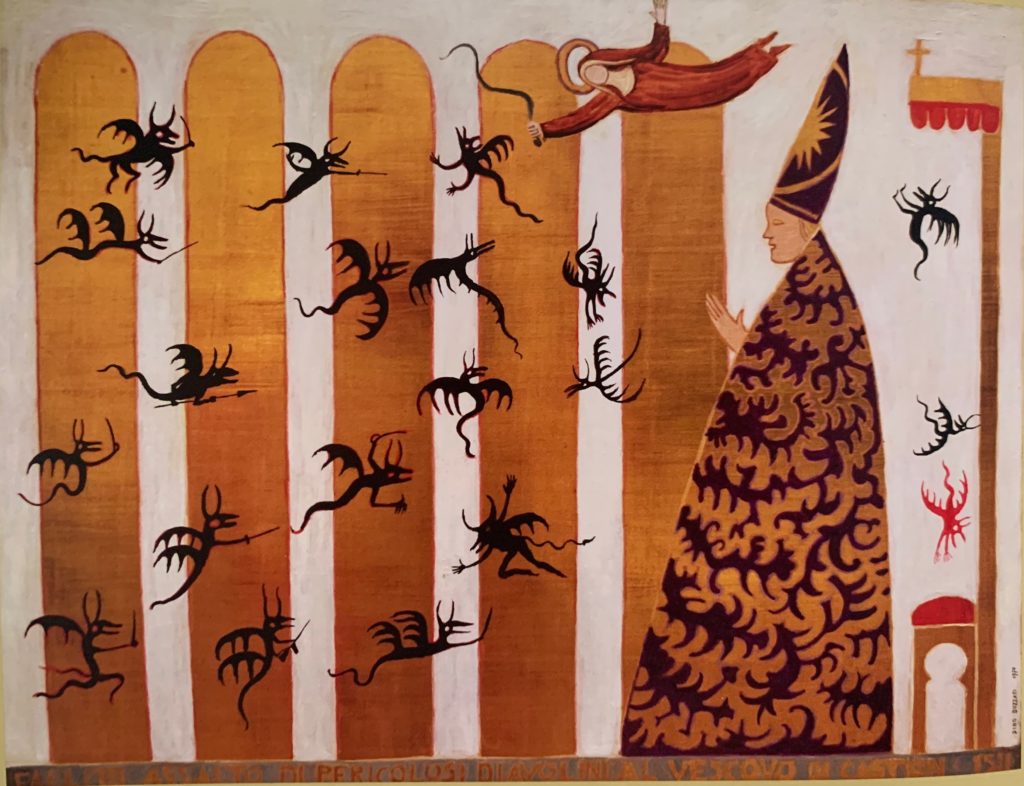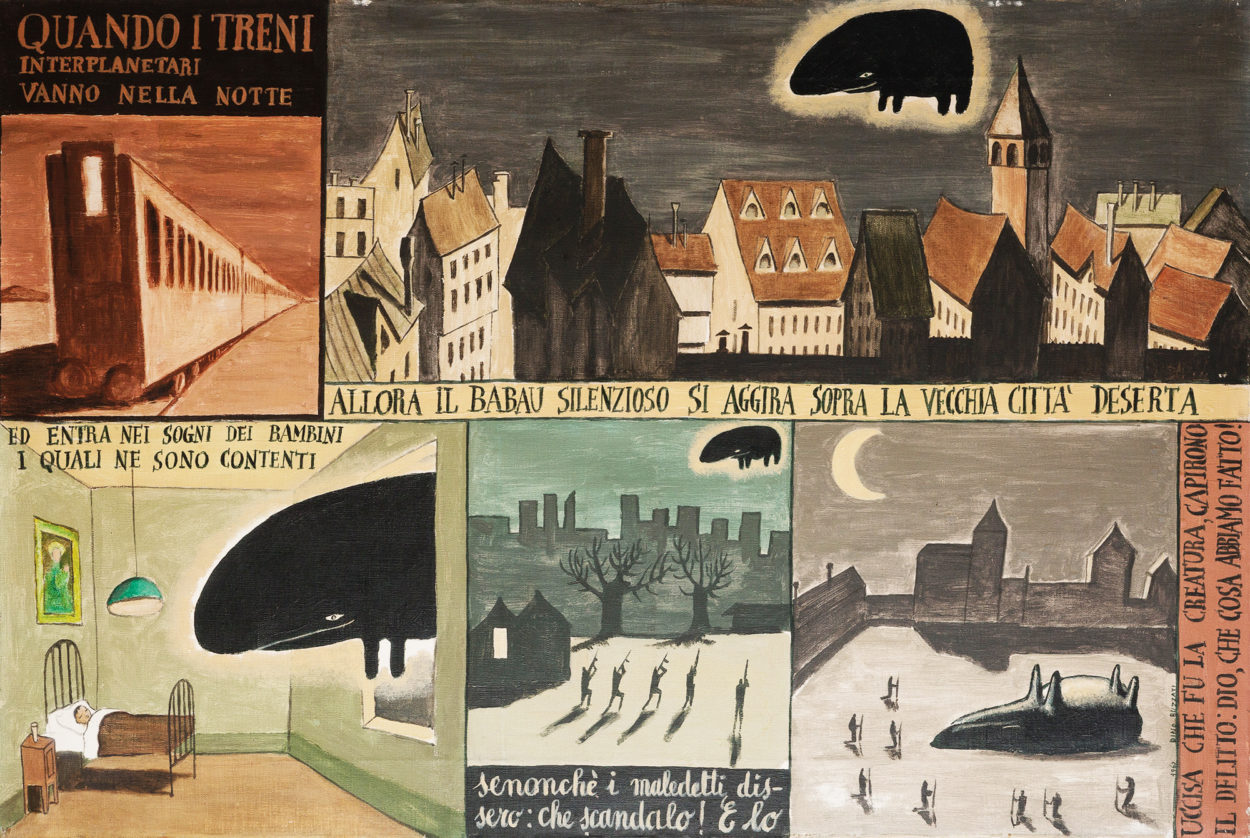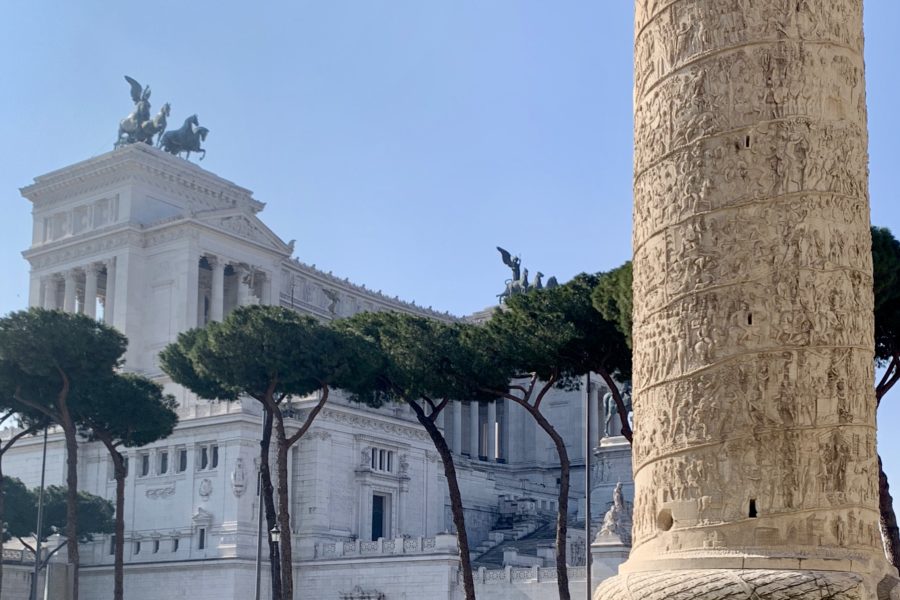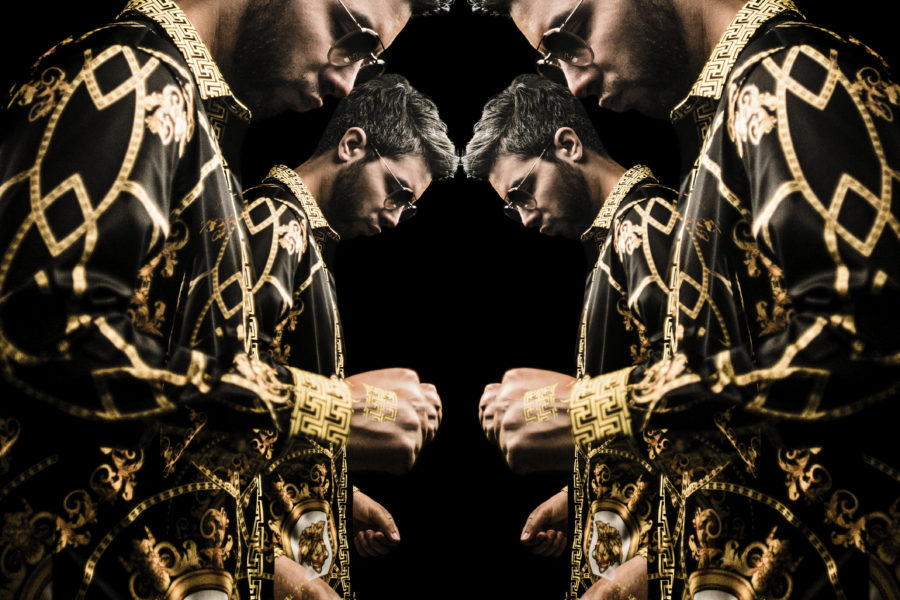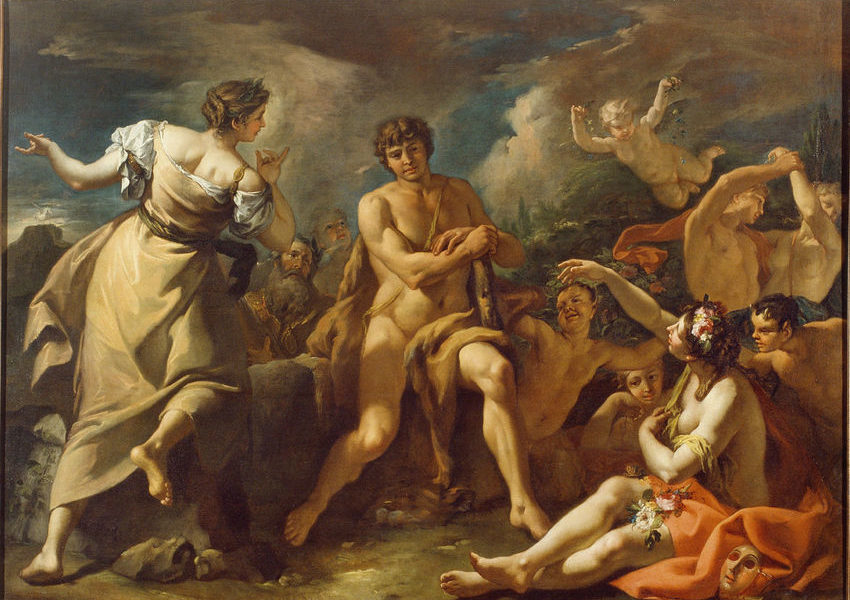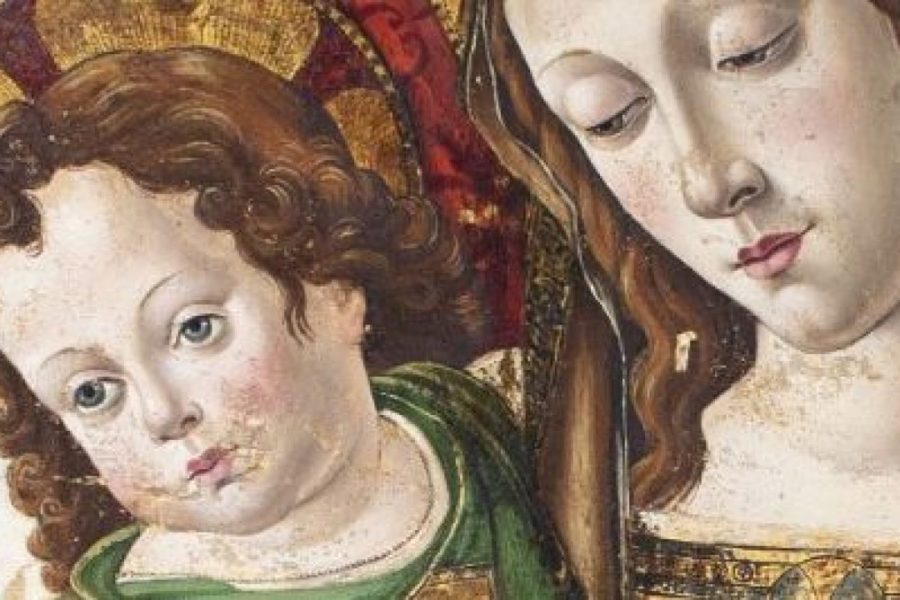Almost two weeks ago, the Dino Buzzati’s great exhibition, has been inaugurated at Palazzo Fulcis (Belluno). On the third floor of the building, which houses the collections of the Civic Museum, the illustrator’s works are divided into two rooms, in direct contact with Sebastiano Ricci’s famous “Camerino d’Ercole”, in a parallelism that well outlines wealth historical-artistic of the place of the Dolomites.
“The seasons of Buzzati”, which is the name given to the exhibition curated by Marco Perale, examines the entire career of the writer. Composed of a total of 54 works, of which eleven unpublished (mostly found in the Villa Buzzati of Visome, Belluno), the exhibition presents drawings, autographs and personal objects, which are related to the paintings. The route is divided into three zones and as many phases, which are called: “sunrise”, “nostalgia for fear” and “the end of the centaur”.
First segment is very important: alba (sunrise) in fact, in this context, is not only synonymous with “birth”, but it is also the proper name of Dino’s mother, Alba Mantovani, a woman who will have a great impact on the artist’s private and artistic life . It is the period in which Buzzati seems to delight particularly in the art of drawing, also because of the affection towards the two granddaughters, Laura and Alba Maria Ramazzotti, affectionately called Lalla and Pupa. The dual interests of the artist are already beginning to perceive from these works, from the domestic-family taste: not only is there a look at Depero’s dialectic, but there is also a reference to current comics, coming from children’s story. The reference to the world of comics will be important throughout Buzzati’s career, which will soon combine the written word, as is well known in “Il Babau” of 1967. To better illustrate the value of this exhibition, we wanted to briefly tell you about the works that most impressed us.
Le palais hanté, 1923 is the first graphic work by Buzzati. The cues taken from the works of Arthur Rackham, an illustrator of children’s books, are clearly visible. In the lower part of the painting, verses taken from a short poem by E.A. Poe.
Cagnone in San Pellegrino, 1969 is portrayed the iconic “big dog” by Buzzati, the artist’s bulldog. In the background, the aforementioned Villa of San Pellegrino.
Coming to artistic maturity, which at this juncture corresponds to “nostalgia for fear”, we find ourselves facing the fervent Sixties. These are the years in which overseas artistic movements begin to make space, thanks mainly to the Venice Biennale held in the lagoon in 1964. Buzzati integrates two trips to New York, in 1963 and 1965, an occasion during which manages to confront Lichtenstein’s blatantly cartoonish dialectic and Andy Warhol’s iconic dialectic.
The Martians, 1971 is a complex painting, composed by an exceptional plurality of quotations. Playing “at home”, the first reference to mention is undoubtedly that of “The Hunt for Bulls in Campitello” by Marco Ricci, a painting preserved in the same building that will host the exhibition in these months. We could also venture a reference to the fourteenth-century Ambrogio Lorenzetti, who in the famous “Allegory of Good and Bad Government” presents suspended figures, like that of Saint Rita, but also a crowd that occupies the city. Of particular interest is the cartouche that Dino places on the top of the canvas, an element of long pictorial tradition, but which the artist uses, once again, to put narrative element to the pictorial work.
Portrait of Antonella and Valentina, 1968 is the painting in which Belluno and American inspiration merge. To the floral motifs, deriving from the dolomitic suggestions, goes to join the modus operandi of the pattern painting, that begins to develop really from 1968, when the interest for the decoration and the feminine universe becomes always stronger. Perhaps one of the most underrated paintings of Buzzati production.
“The end of the centaur”, represents the end of the exhibition, which examines the last moments of the earthly and artistic life of Dino Buzzati, where everything becomes more accentuated, but also with a bitter aftertaste, where Buzzati proves to be aware of the time counted due to pancreatic cancer, the same disease that killed his father when he was just a kid.
The Portrait of Saint Rita, 1972 which comes a year after the famous literary work “The miracles of Val Morel”, is the last painting by Dino, commissioned by Bartolo Mastel. Perhaps not the most successful work, the canvas is still food for thought for what is one of the constants, and perhaps one of the favorite themes, of the artist: the representation of Saint Rita. The saint appears on several occasions, giving the opportunity to Belluno, who moved to Milan, to unite sacred and profane, earthly and otherworldly.
Attack on the Bishop, 1970 seen live, is perhaps the most surprising table, not so much for the iconographic point of view, as for the pictorial rendering. Buzzati reasons on the rendering of the printing of materials, but also on the effect that the pictorial material may have. At this juncture, to be valued is the gold color, with its metallic grandeur, which is able to illuminate the entire painting, where we find, once again, the holy flying “Rita” that we have already been able to admire in the previous works. Not that it is particularly surprising for the history of art, accustomed by a long tradition to the gold leaf, this kind of brilliance, but for Buzzati, who has accustomed us to opaque shades with wide capiture, it represents an absolute novelty.
In conclusion, “The Seasons of Buzzati” is an exhibition to be seen. Whether you are passionate about reading, rather than painting, I am sure that the exhibition will offer you excellent ideas, bringing you back even a little children, thanks to the wonderful stories that, as he beautifully knew how to render on paper, Buzzati is able to tell in a few square centimeters of canvas: this is why Dino Buzzati is the illustrator of the word par excellence.
The exhibition “The seasons of Buzzati” will close on 6 January 2020.
All the images shown here are taken from the exhibition’s catalog, available at the Palazzo Fulcis bookshop.
